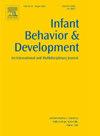妊娠期FITT-V运动:1个月婴儿神经运动结局
IF 2
3区 心理学
Q3 PSYCHOLOGY, DEVELOPMENTAL
引用次数: 0
摘要
尽管数十年的研究记录了怀孕期间运动对健康的好处,但产前运动如何影响婴儿神经运动技能的发展仍然未知。目的探讨不同运动方式对产妇运动指标的影响;频率,强度,时间,类型和体积(FITT-V)对婴儿大运动技能的影响。我们假设,母亲在怀孕期间进行锻炼的1个月大的婴儿,与母亲在怀孕期间不进行锻炼的婴儿相比,会表现出更发达的大运动技能。此外,我们假设婴儿大肌肉运动技能与母亲的运动频率、运动量和持续时间直接相关。材料,方法将18 ~ 40岁的健康孕妇随机分为有氧运动组、抵抗运动组、联合运动组和不运动组。婴儿神经运动技能(n = 162)在1月龄时使用Peabody发育运动量表第2版(PDMS-2)进行测量。结果运动母亲所生婴儿的运动亚测试百分位数高于对照组(p = .09),而运动组分配对结果没有影响。每次运动强度平均为>; 4 METs (n = 35)的女性所生的婴儿显示出更高的总体大运动商(GMQ)百分位数得分(p = .02)。结论:虽然我们发现母亲在怀孕期间的运动频率、运动量或持续时间没有关系,但运动强度与1个月大婴儿运动技能的提高存在强度依赖关系。本文章由计算机程序翻译,如有差异,请以英文原文为准。
Exercise FITT-V during pregnancy: 1-month infant neuromotor outcomes
Background
Despite decades of research documenting health benefits from exercise during pregnancy, it remains unknown how prenatal exercise affects infant neuromotor skill development.
Objectives
To examine the effects of exercise modes, and maternal exercise metrics; frequency, intensity, time, type, and volume (FITT-V) during pregnancy on infant gross motor skills. We hypothesized that 1 month old infants of mothers who exercised during pregnancy would exhibit more developed gross motor skills compared to infants of mothers who did not exercise during pregnancy. Further, we hypothesized that infant gross motor skills will be directly associated with maternal exercise frequency, volume, and duration.
Materials & methods
Healthy pregnant women between 18 and 40 years were randomized to one of four groups: aerobic, resistance, combination exercise, or no exercise. Infant neuromotor skills (n = 162) were measured at 1 month of age using the Peabody Developmental Motor Scales, 2nd Edition (PDMS-2).
Results
Locomotion subtest percentile for infants born to exercising mothers trended higher than infants of controls (p = .09), while exercise group allocation did not affect outcomes. Infants born to women who averaged > 4 METs (n = 35) exercise intensity during each session showed a higher overall Gross Motor Quotient (GMQ) percentile score (p = .02). CONCLUSION: While we found no relationship for maternal exercise frequency, volume or duration during pregnancy, exercise intensity shows an intensity-dependent association with increased locomotor skills in 1 month old infants.
求助全文
通过发布文献求助,成功后即可免费获取论文全文。
去求助
来源期刊

Infant Behavior & Development
PSYCHOLOGY, DEVELOPMENTAL-
CiteScore
4.10
自引率
4.80%
发文量
94
期刊介绍:
Infant Behavior & Development publishes empirical (fundamental and clinical), theoretical, methodological and review papers. Brief reports dealing with behavioral development during infancy (up to 3 years) will also be considered. Papers of an inter- and multidisciplinary nature, for example neuroscience, non-linear dynamics and modelling approaches, are particularly encouraged. Areas covered by the journal include cognitive development, emotional development, perception, perception-action coupling, motor development and socialisation.
 求助内容:
求助内容: 应助结果提醒方式:
应助结果提醒方式:


